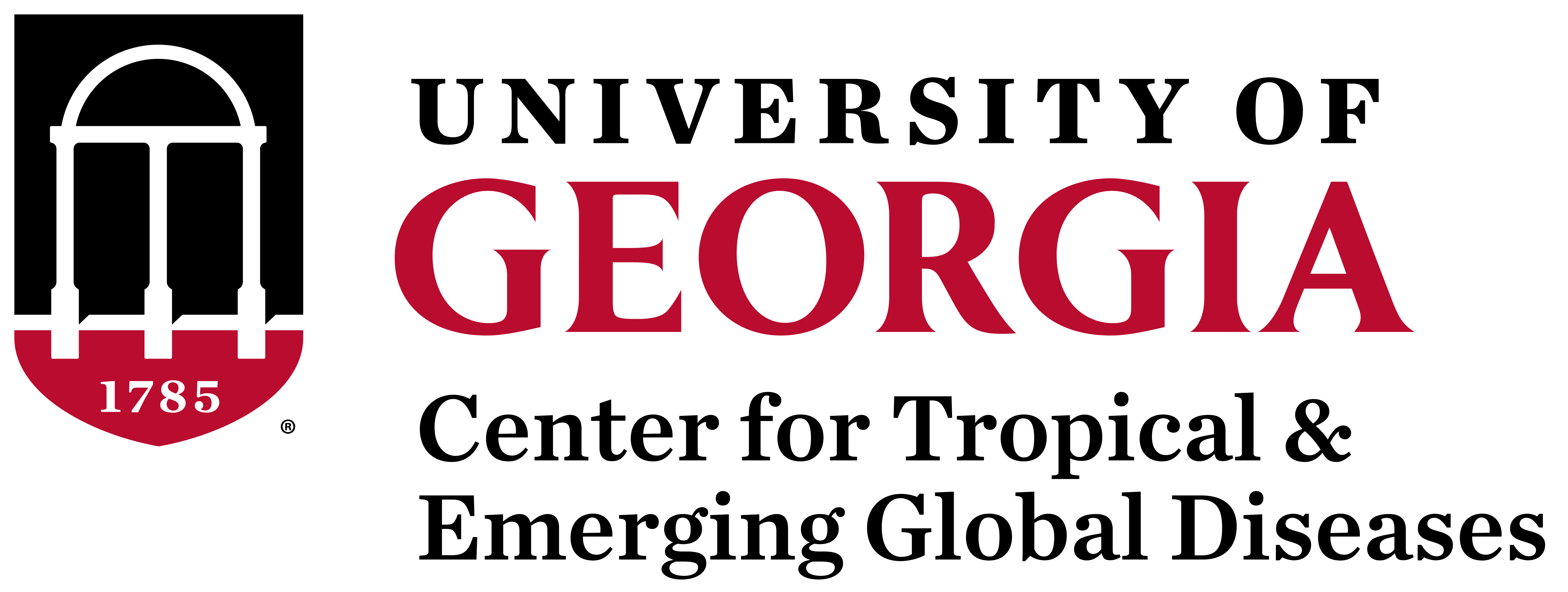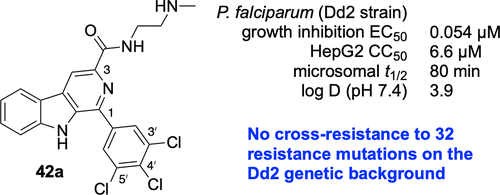β-Carboline-3-carboxamide Antimalarials: Structure-Activity Relationship, ADME-Tox Studies, and Resistance Profiling
The development of parasite resistance to both artemisinin derivatives and their partner drugs jeopardizes the effectiveness of the artemisinin combination therapy. Thus, the discovery of new antimalarial drugs, with new mechanisms of action, is urgently needed. We recently disclosed that β-carboline 1a was orally efficacious in Plasmodium berghei-infected mice and that it showed low cross-resistance between susceptible Plasmodium falciparum and four different drug-resistant strains. In this report, we describe the synthesis and in vitro antimalarial evaluation of 91 new derivatives of 1a. The asexual blood stage growth inhibition data show a clear preference for a 3,4-dihalogenated, 3,5-dihalogenated, 3,4,5-trichloro-, or 4-trifluoromethyphenyl ring at the C1-position. The most potent compound, 3,4,5-trichlorophenyl-substituted 42a, is twice as potent as 1a. Six potent analogues were assessed for their drug-like properties, and four of these were subjected to in vitro barcoded cross-resistance profiling. Compounds 1a, 1m, 42a, and 42m showed no cross-resistance to 32 resistance mutations on the Dd2 genetic background and 10 resistance mutations on the 3D7 genetic background. These data suggest that compounds in this scaffold possess a novel mechanism of antimalarial action.
Jopaul Mathew, Bo Zhou, Reagan S Haney, Kevin A Kunz, Leticia S Do Amaral, Rudraneel Roy Chowdhury, Joshua H Butler, Haibo Li, Amarraj J Chakraborty, Anika Tabassum, Emily K Bremers, Emilio F Merino, Rachael Coyle, Marcus C S Lee, Delphine Baud, Stephen Brand, Maxim Totrov, Maria Belen Cassera, Paul R Carlier. ACS Infect Dis. 2024 Oct 28. doi: 10.1021/acsinfecdis.4c00653.

